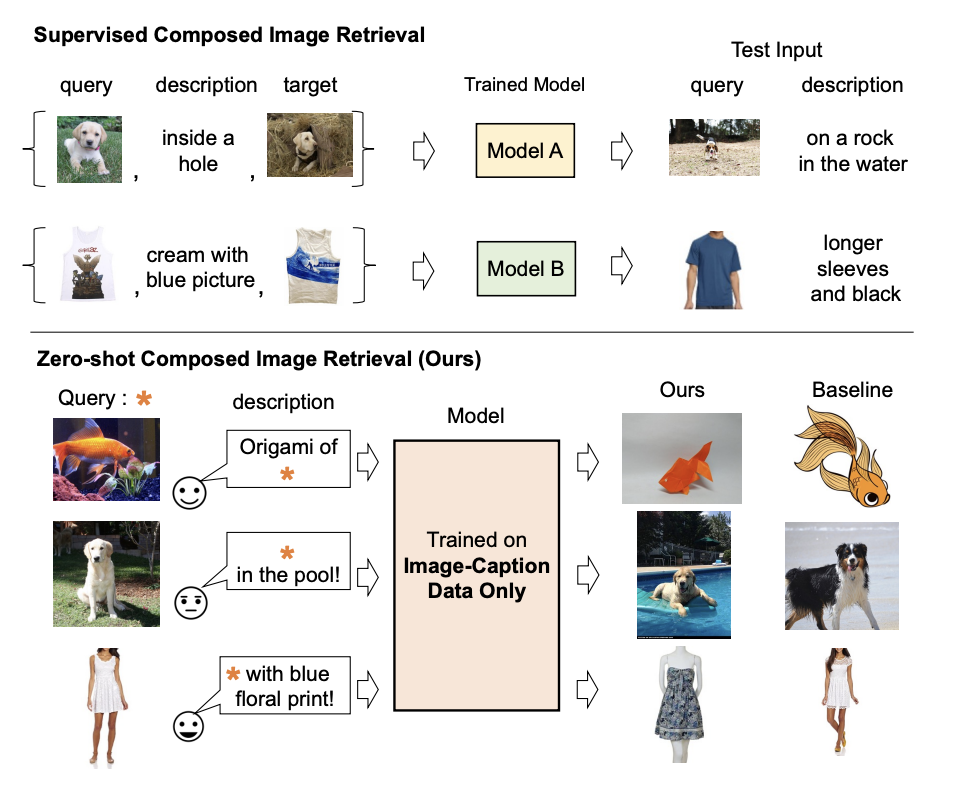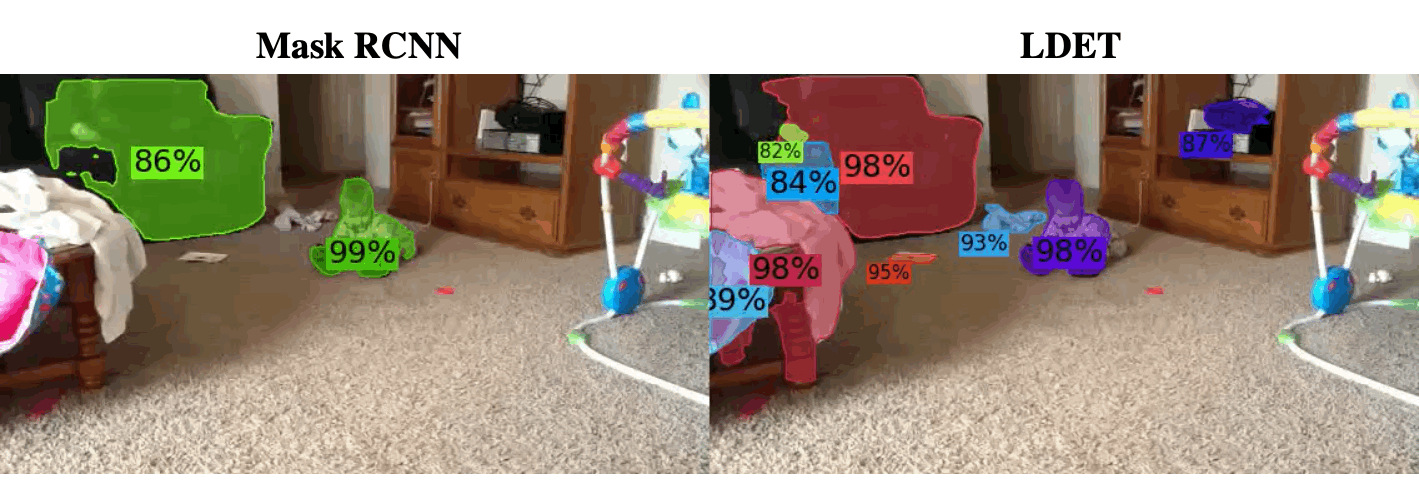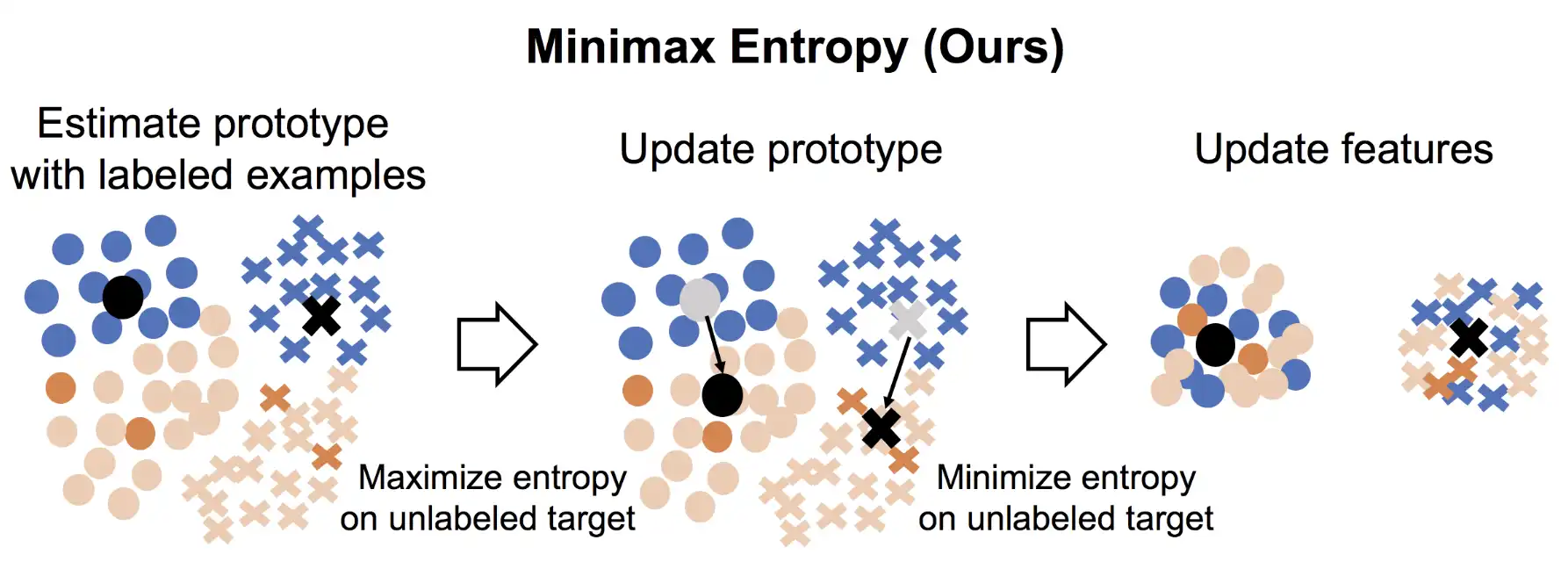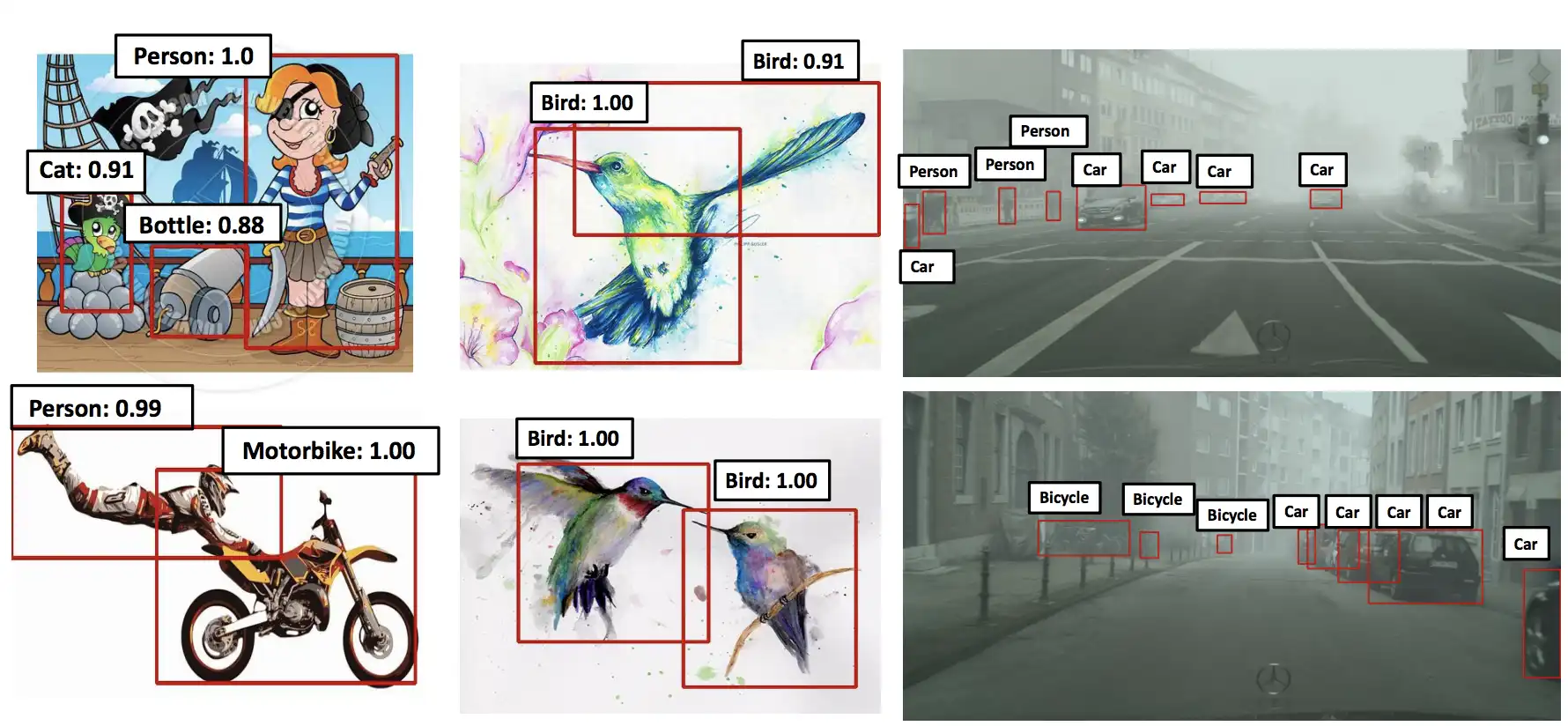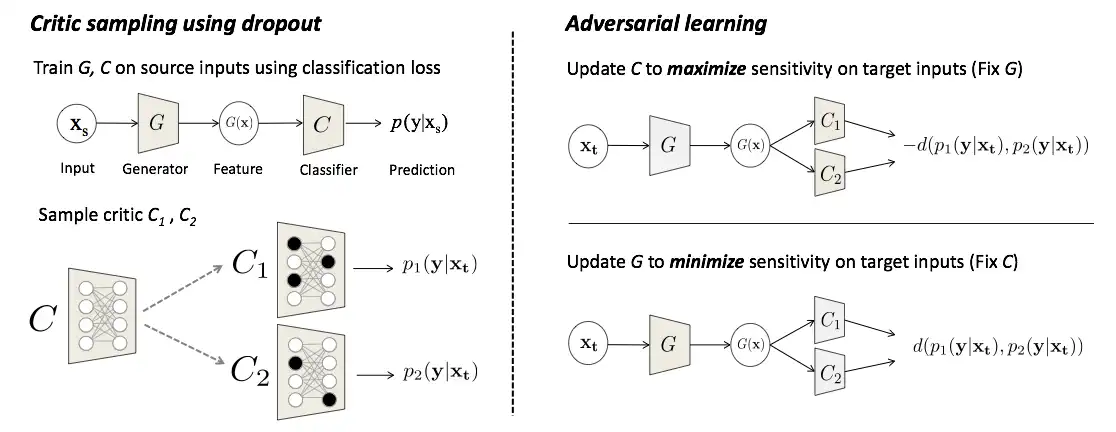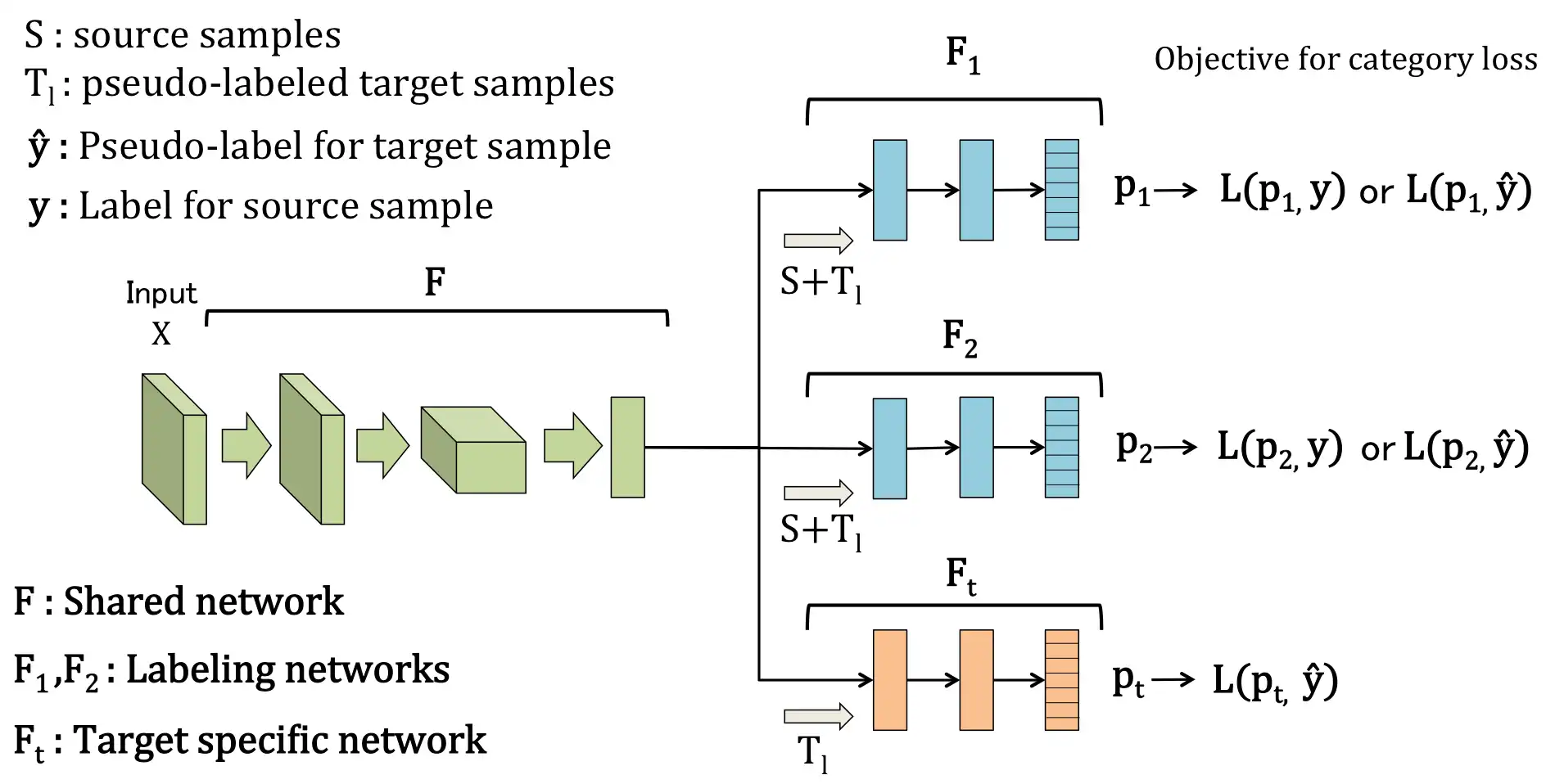Research Projects
Pic2Word: Mapping Pictures to Words for Zero-shot Composed Image Retrieval
Kuniaki Saito, Kihyuk Sohn,Xiang Zhang, Chun-Liang Li, Chen-Yu Lee, Kate Saenko, Tomas Pfister CVPR 2023
Paper
Prefix Conditioning Unifies Language and Label Supervision
Kuniaki Saito, Kihyuk Sohn,Xiang Zhang, Chun-Liang Li, Chen-Yu Lee, Kate Saenko, Tomas Pfister CVPR 2023
Paper
Tune it the Right Way: Unsupervised Validation of Domain Adaptation via Soft Neighborhood Density
Kuniaki Saito , Donghyun Kim, Piotr Teterwak, Stan Sclaroff, Trevor Darrell, and Kate Saenko ICCV 2021
Paper View Project Code
OVANet: One-vs-All Network for Universal Domain Adaptation
Kuniaki Saito and Kate Saenko ICCV 2021
Paper Slides View Project Github
Universal Domain Adaptation through Self-Supervision
Kuniaki Saito, Donghyun Kim, Stan Sclaroff, and Kate Saenko NeurIPS2020
Paper View Project Github
COCO-FUNIT: Few-Shot Unsupervised Image Translation with a Content Conditioned Style Encoder
Kuniaki Saito, Kate Saenko and Ming-Yu Liu ECCV2020
Unsupervised image-to-image translation intends to learn a mapping of an image in a given domain to an analogous image in a different domain, without explicit supervision of the mapping. Few-shot unsupervised image-to-image translation further attempts to generalize the model to an unseen domain by leveraging example images of the unseen domain provided at inference time. While remarkably successful, existing few-shot image-to-image translation models find it difficult to preserve the structure of the input image while emulating the appearance of the unseen domain, which we refer to as the content loss problem. This is particularly severe when the poses of the objects in the input and example images are very different. To address the issue, we propose a new few-shot image translation model, which computes the style embedding of the example images conditioned on the input image and a new architecture design called the universal style bias. Through extensive experimental validations with comparison to the state-of-the-art, our model shows effectiveness in addressing the content loss problem.
Paper View ProjectSemi-supervised Domain Adaptation via Minimax Entropy
Kuniaki Saito, Donghyun Kim, Stan Sclaroff, Trevor Darrell and Kate Saenko ICCV2019
We proposed a method for Semi-supervised Domain Adaptation where a few labeled target examples are available in addition to unlabeled target examples. We proposed a new adversarial training method to solve the problem.
Paper View Project GithubStrong-Weak Distribution Alignment for Adaptive Object Detection
Kuniaki Saito, Yoshitaka Ushiku, Tatsuya Harada and Kate Saenko CVPR 2019
We proposed a novel method for domain adaptive object detection. We performed weak-distribution alignment for high-level global feature whereas we also performed strong distribution aignment for low-level local feature. Our method outperformed other baselines with a large margin in four adaptation scenarios.
Paper View Project GithubOpen Set Domain Adaptation by Backpropagation
Kuniaki Saito, Shohei Yamamoto, Yoshitaka Ushiku and Tatsuya Harada, ECCV 2018
We proposed a novel method for open set domain adaptation, where a target domain includes the category absent in a source domain. We propose to give a rejecting option to a classifier and achieve it by adversarial learning. Our method outperforms other methods in various tasks with a large margin.
Paper GithubMaximum Classifier Discrepancy for Unsupervised Domain Adaptation
Kuniaki Saito, Kohei Watanabe, Yoshitaka Ushiku and Tatsuya Harada, CVPR 2018 oral
We propose a new approach that attempts to align distributions of source and target domain by utilizing the task-specific decision boundaries. We propose to utilize task-specific classifiers as discriminators that try to detect target samples that are far from the support of the source. Our method outperforms other methods on several datasets of image classification and semantic segmentation.
Paper View Project Code SlidesAdversarial Dropout Reguralization
Kuniaki Saito, Yoshitaka Ushiku, Tatsuya Harada and Kate Saenko, ICLR 2018
We proposed a novel method for unsupervised domain adaptation. The method is based on adversarial learning and effectively utilizes dropout. The method outperforms other methods on digits classification, object classification, and semantic segmentation tasks.
Paper View Project CodeAssymetric Tri-training for Unsupervised Domain Adaptation
Kuniaki Saito, Yoshitaka Ushiku and Tatsuya Harada ICML 2017
We propose the use of an asymmetric tritraining method for unsupervised domain adaptation, where we assign pseudo-labels to unlabeled samples and train the neural networks as if they are true labels. In our work, we use three networks asymmetrically, and by asymmetric, we mean that two networks are used to label unlabeled target samples, and one network is trained by the pseudo-labeled samples to obtain target-discriminative representations. Our proposed method was shown to achieve a stateof-the-art performance on the benchmark digit recognition datasets for domain adaptation.
Paper
